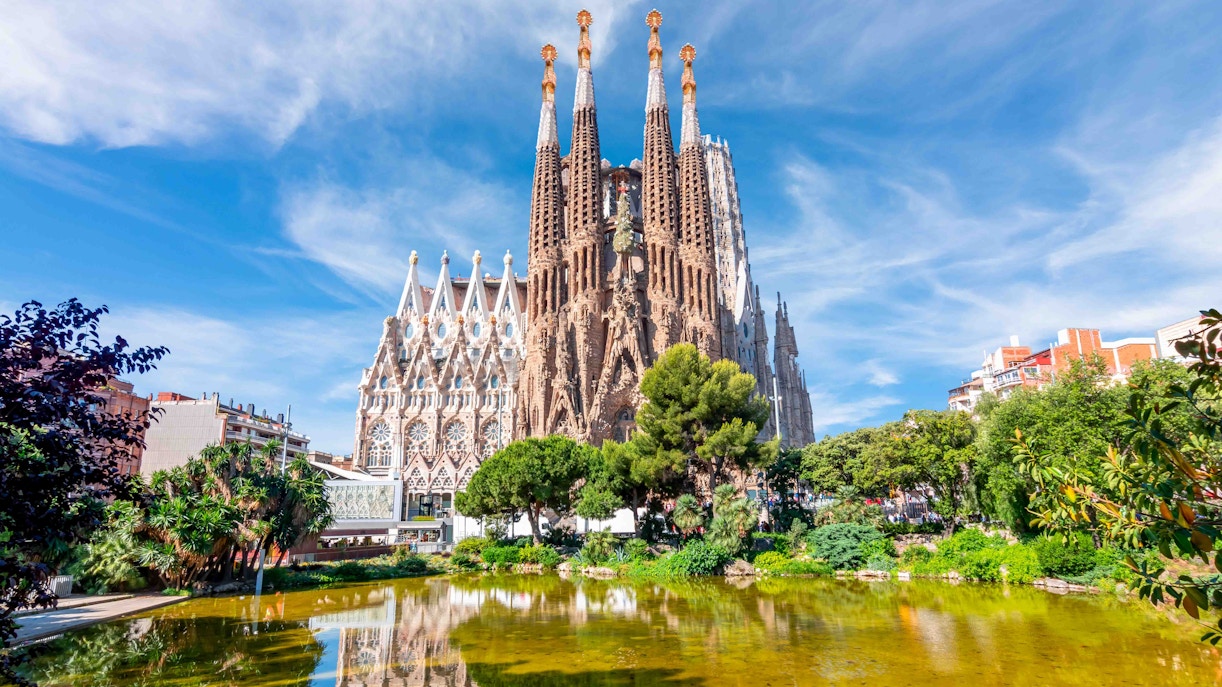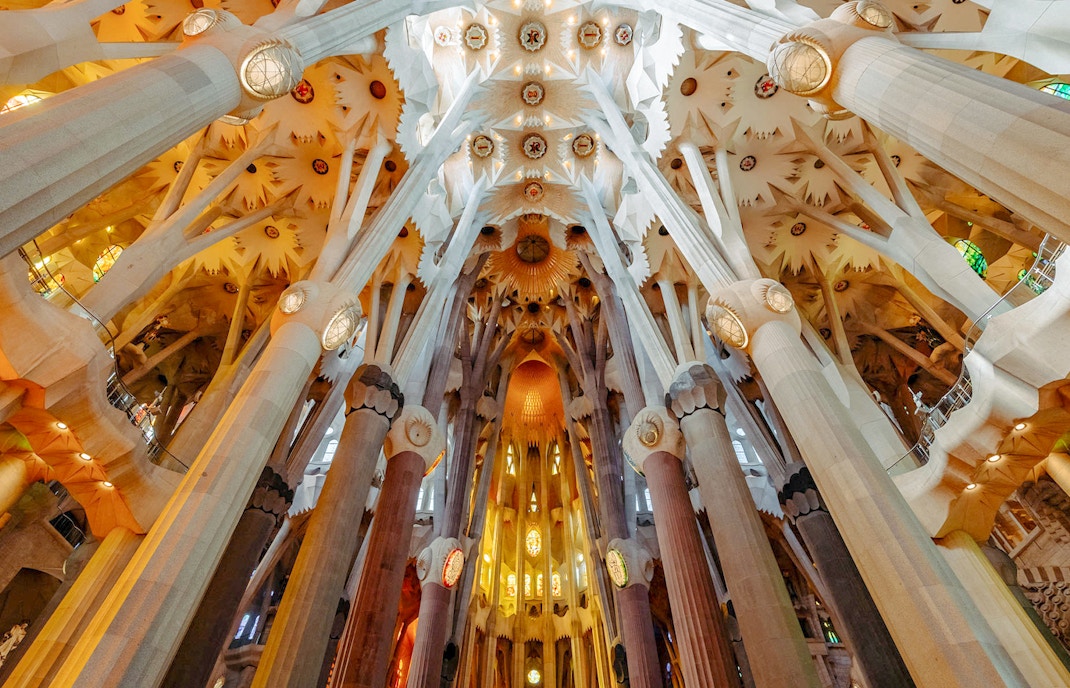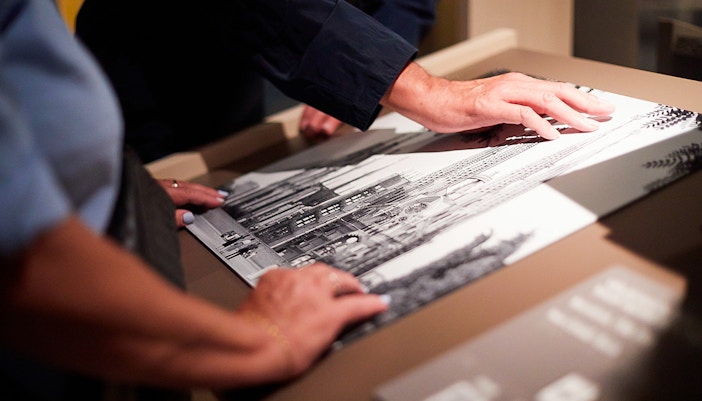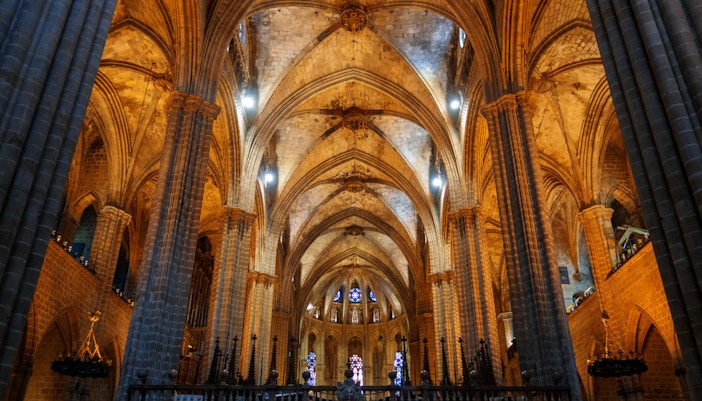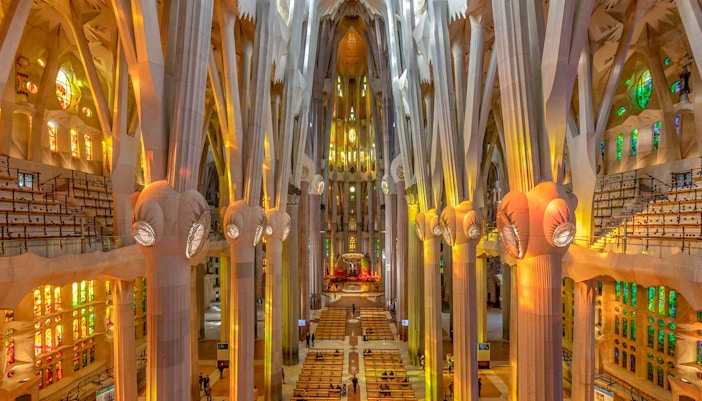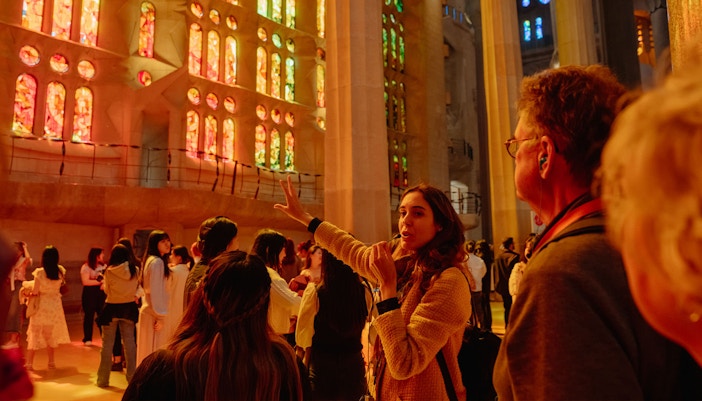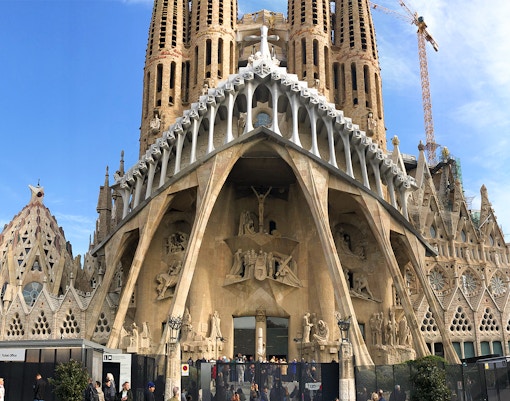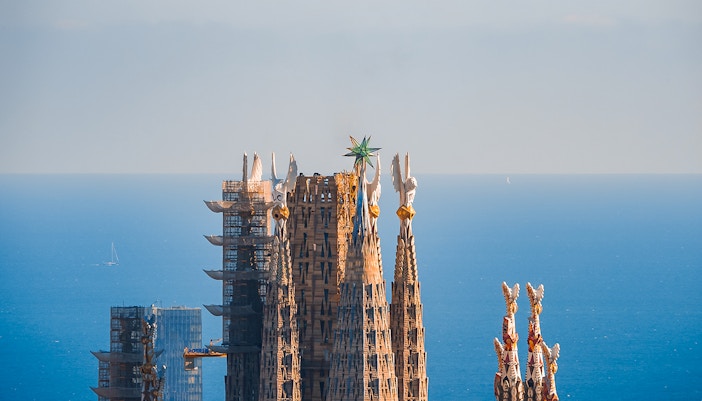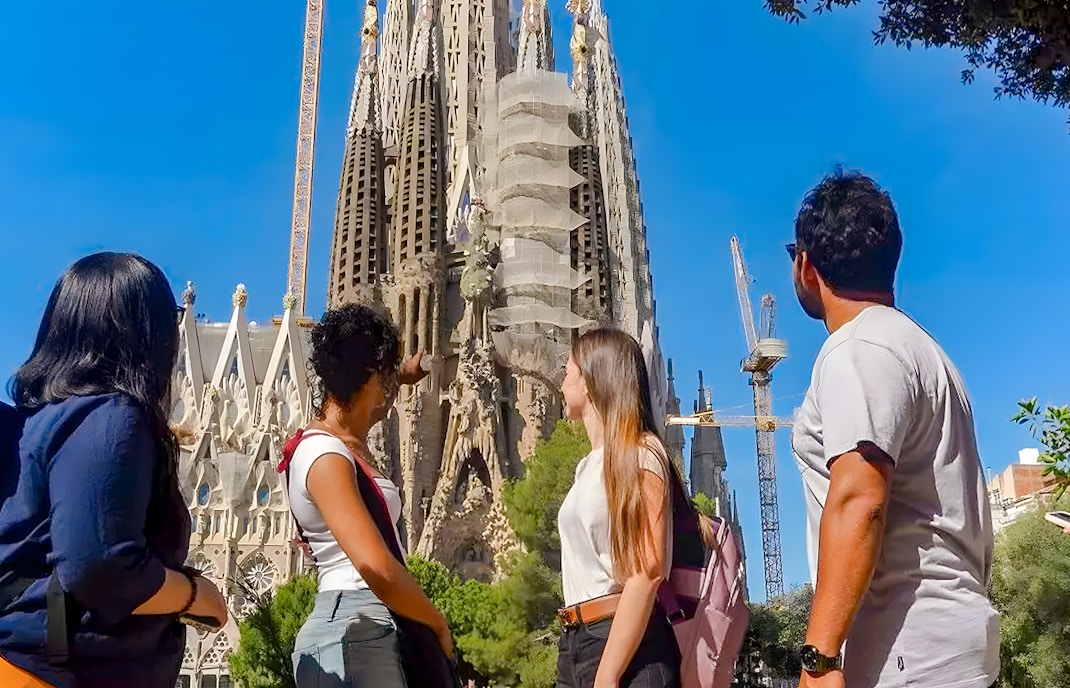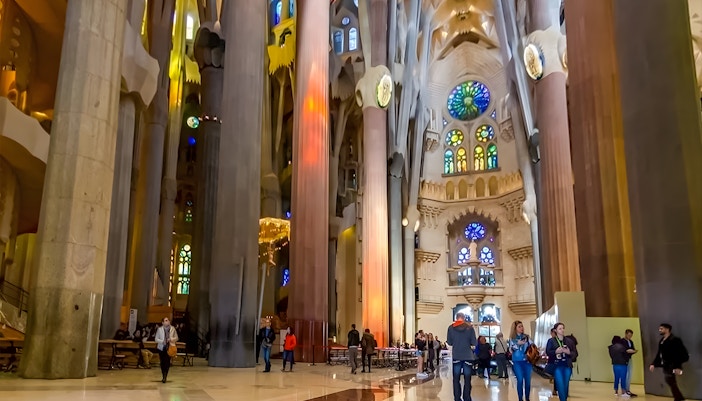Gaudí also introduced hyperbolic paraboloids, helicoidal forms, and catenary arches—all mathematical and natural forms—to create a structure that was both structurally efficient and spiritually expressive. This contrasts with the symmetry and classical order of Renaissance churches like St. Peter’s Basilica. Gaudí also introduced pioneering engineering techniques to achieve his vision. He relied heavily on catenary arches and inverted chain models to test load-bearing structures—methods later echoed in the work of architects like Santiago Calatrava.
The façades exemplify different styles and theological themes. The Nativity Façade, heavily ornamented and joyful, echoes Gothic exuberance with its verticality and intricate sculptures. The Passion Façade, stark and angular, is intentionally modern and dramatic, reminiscent of Cubist abstraction, capturing the suffering of Christ in stone.
Gaudí’s innovative blending of historical styles with natural forms and cutting-edge geometry makes the Sagrada Família unique—not just a church, but a living testament to the evolution of sacred architecture.
